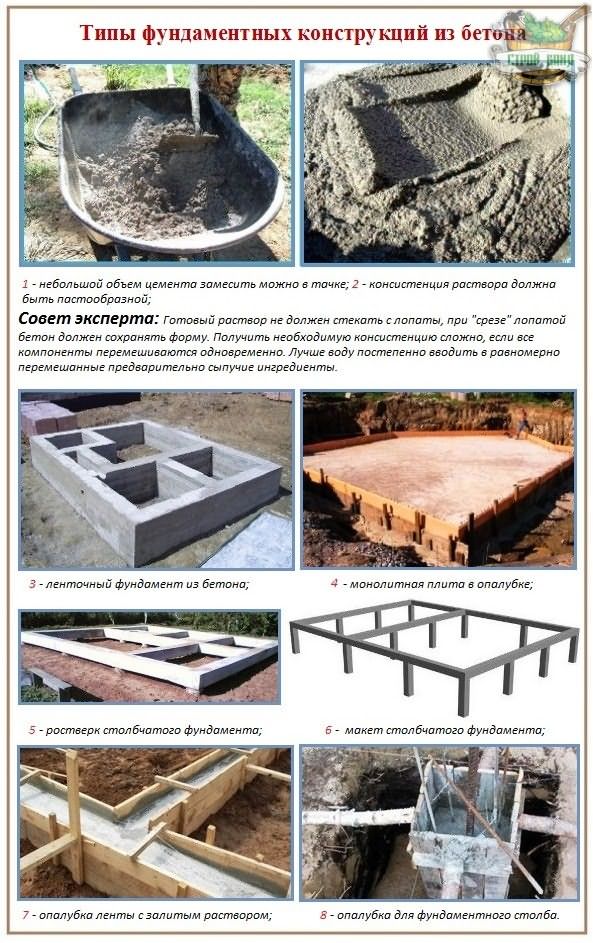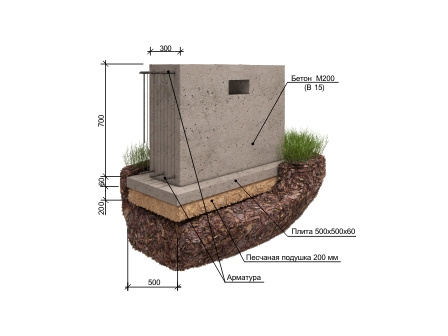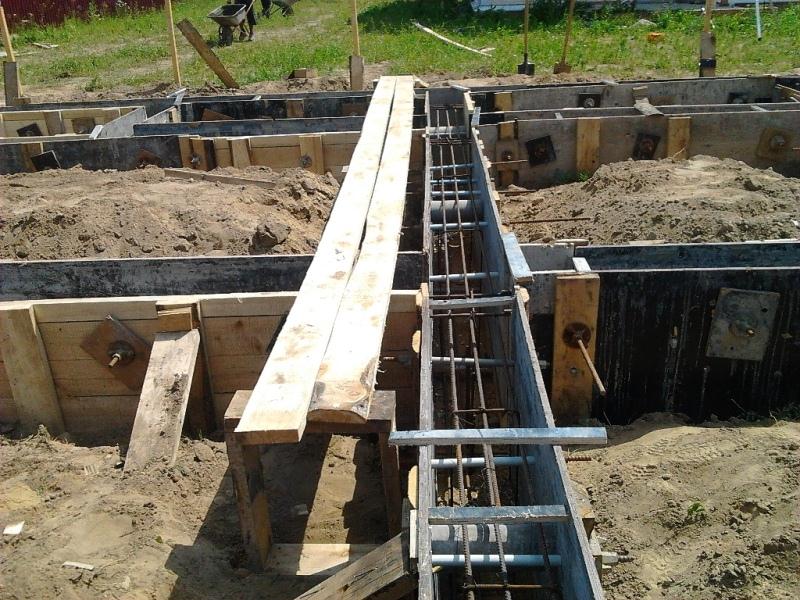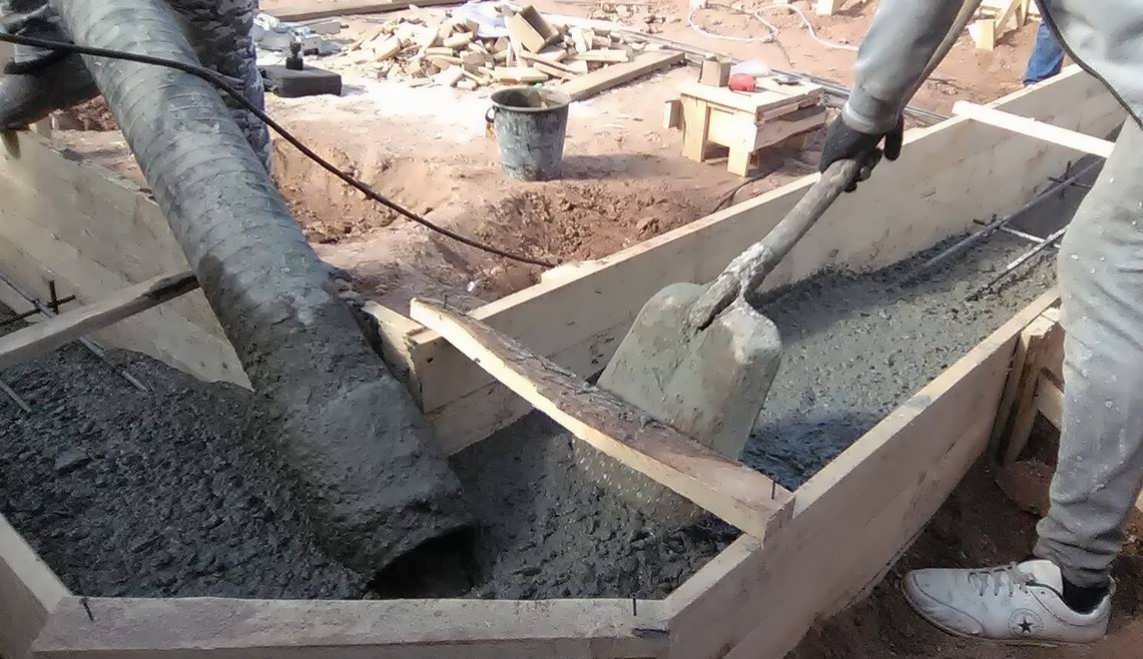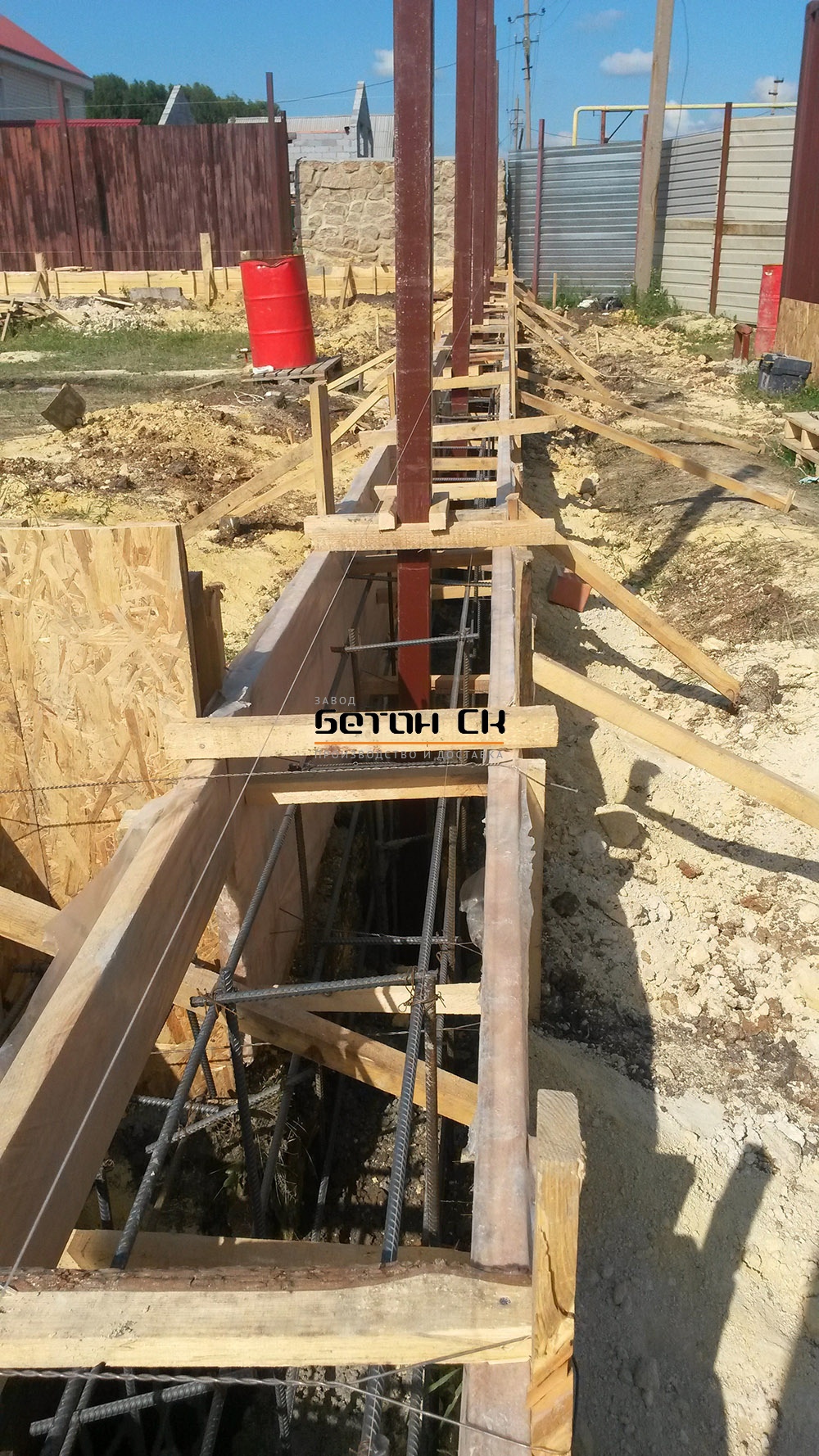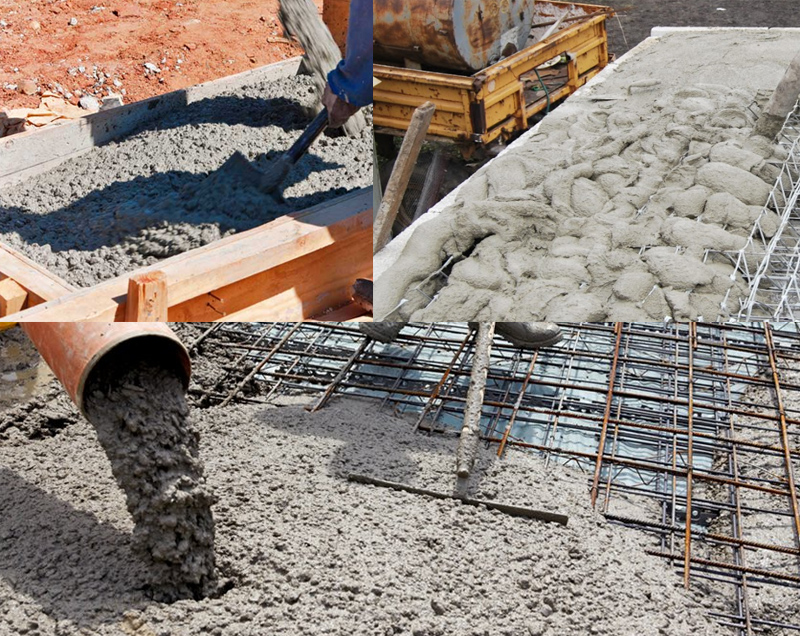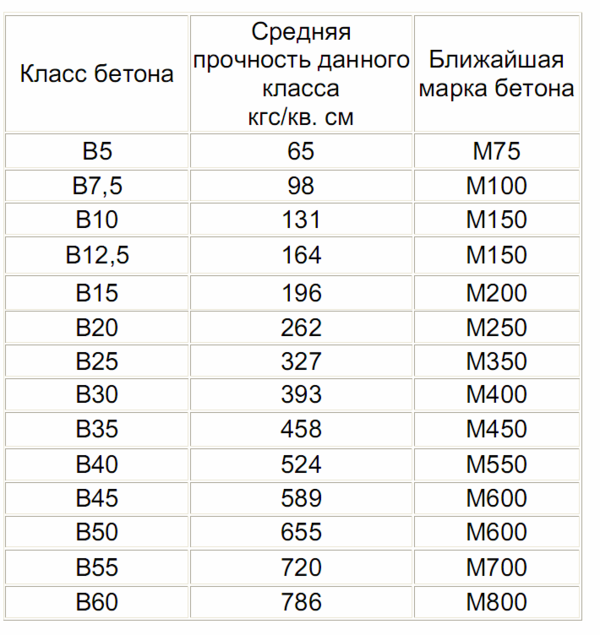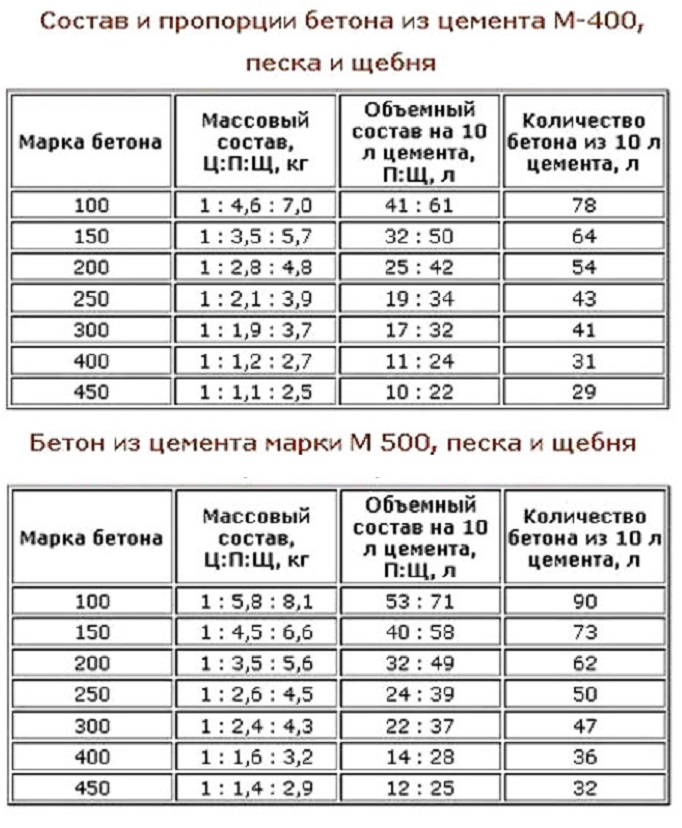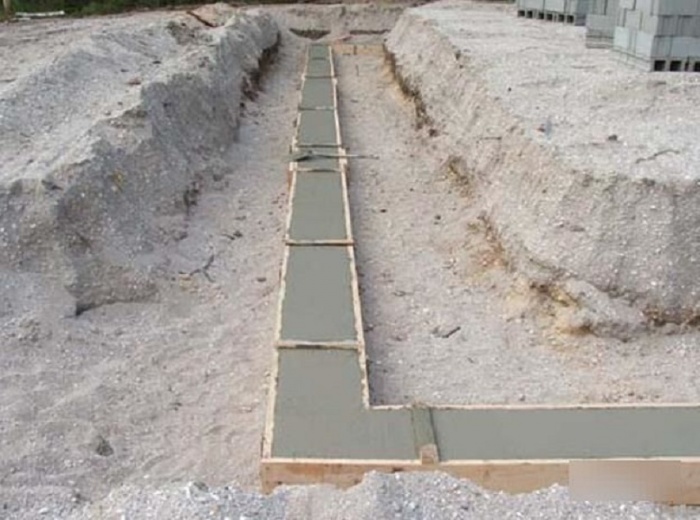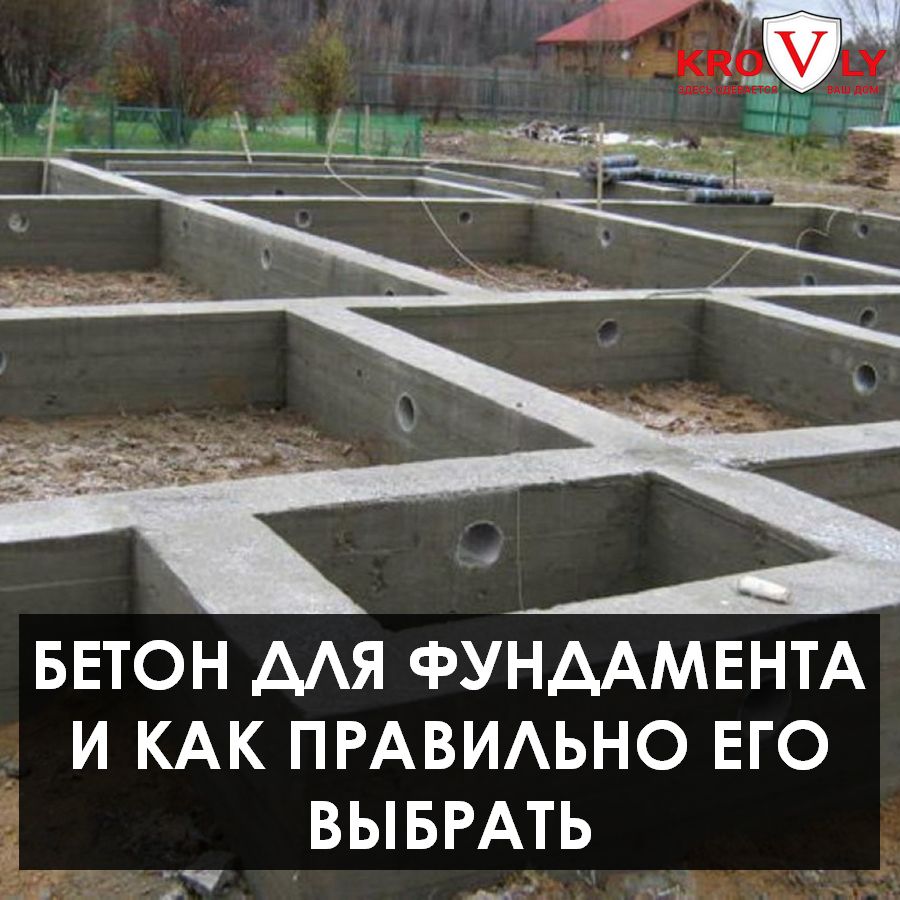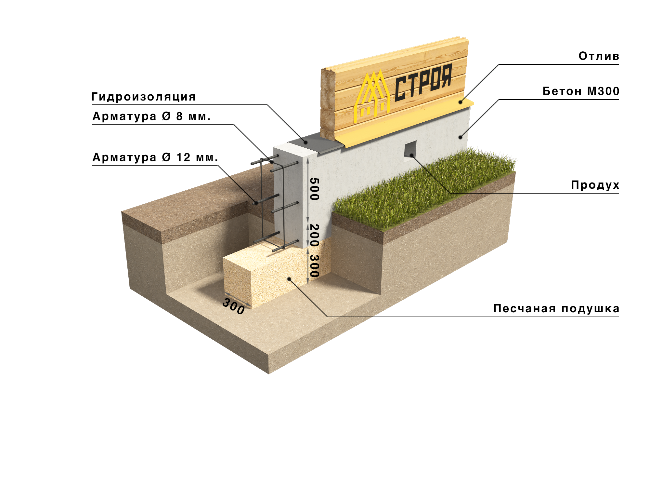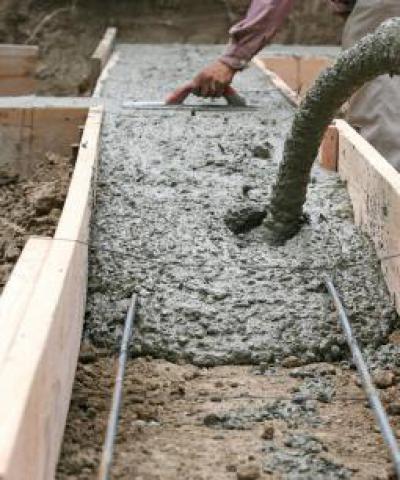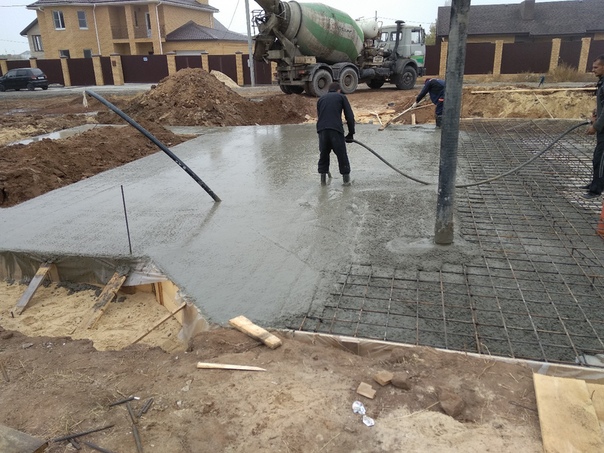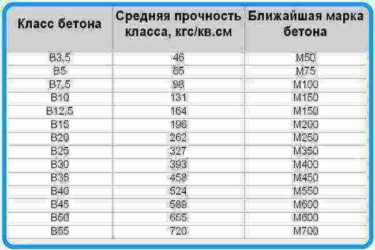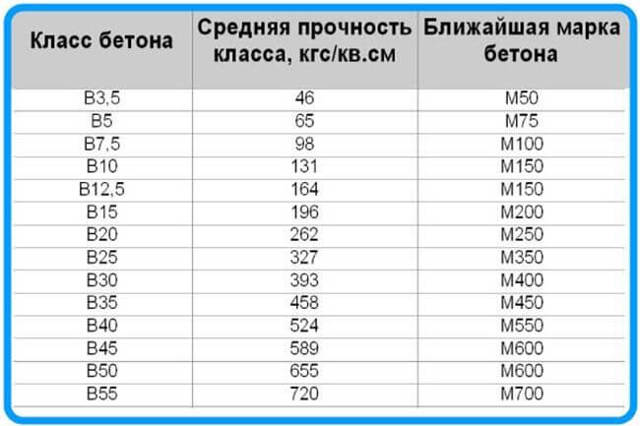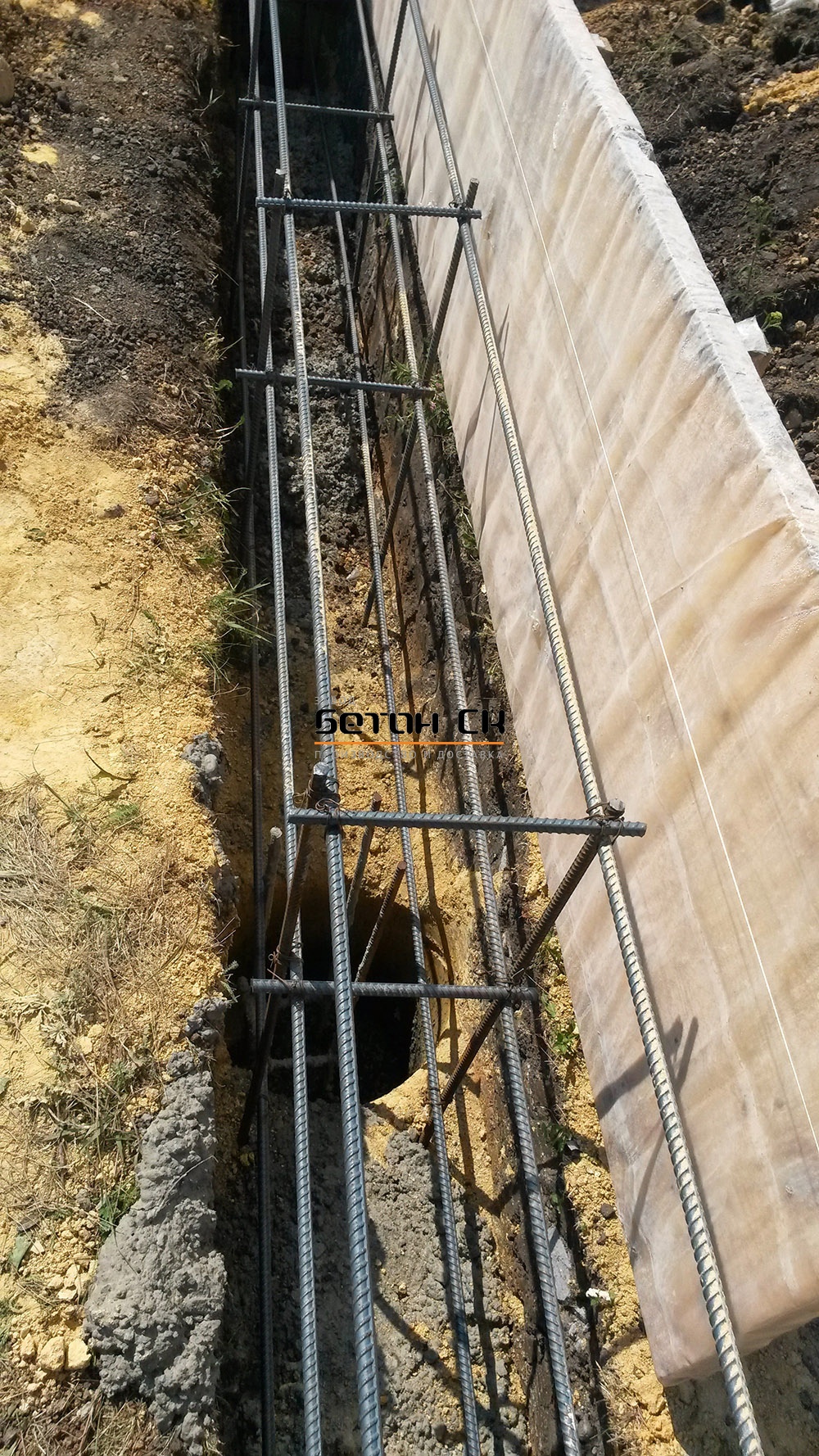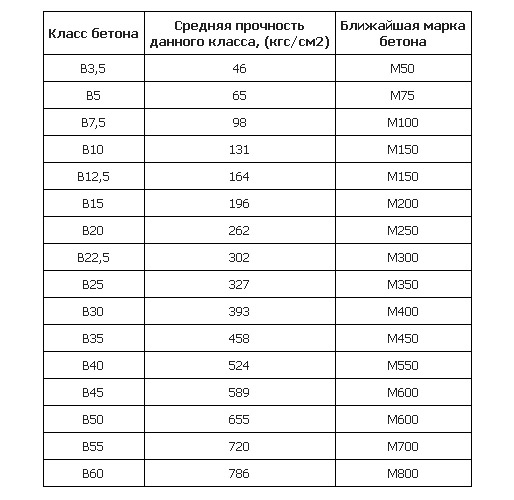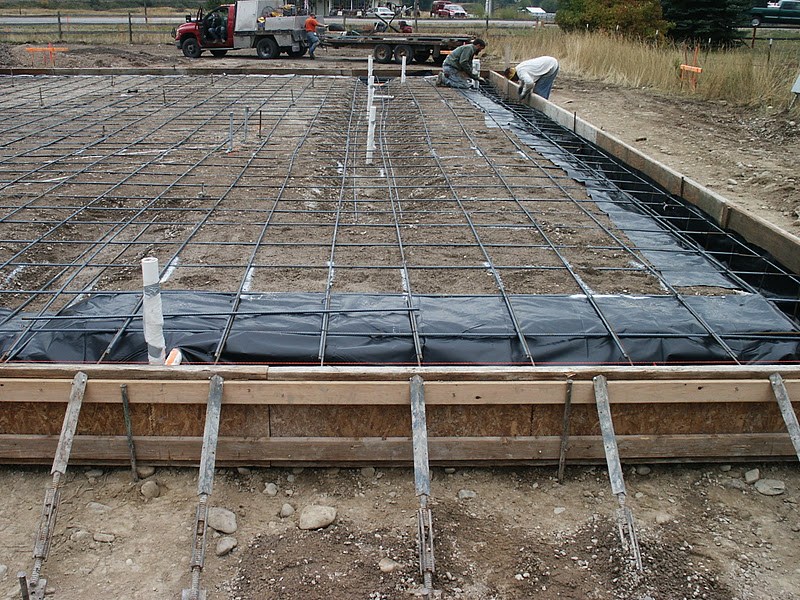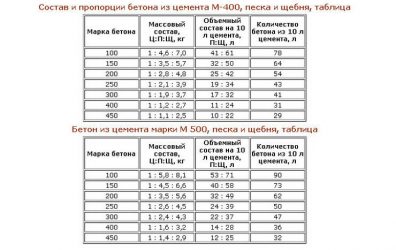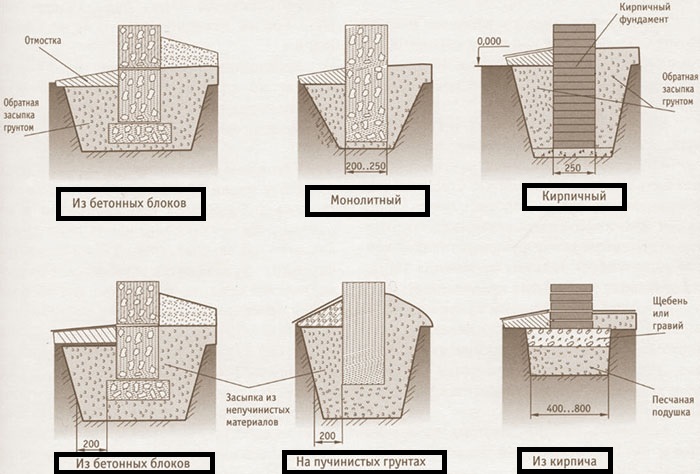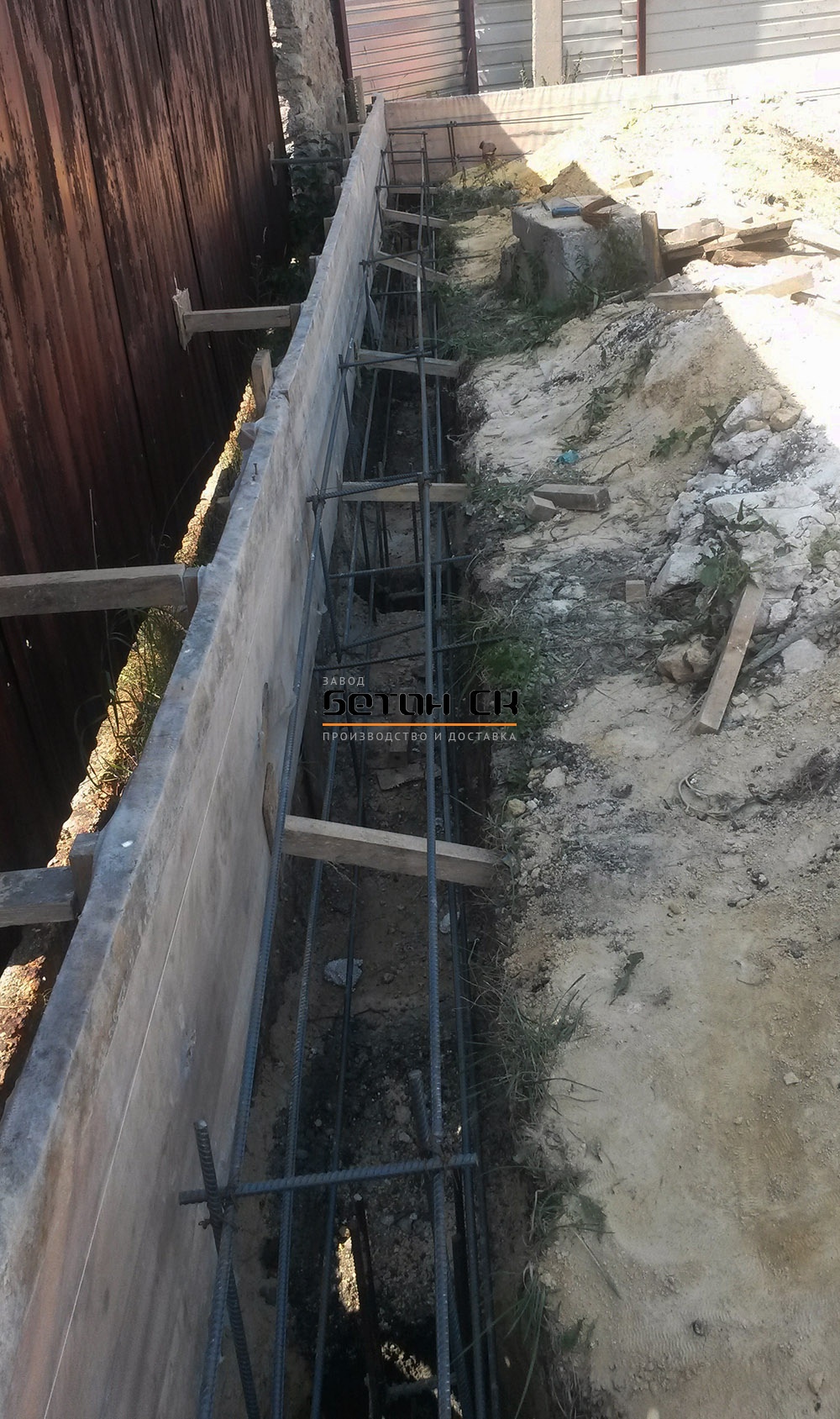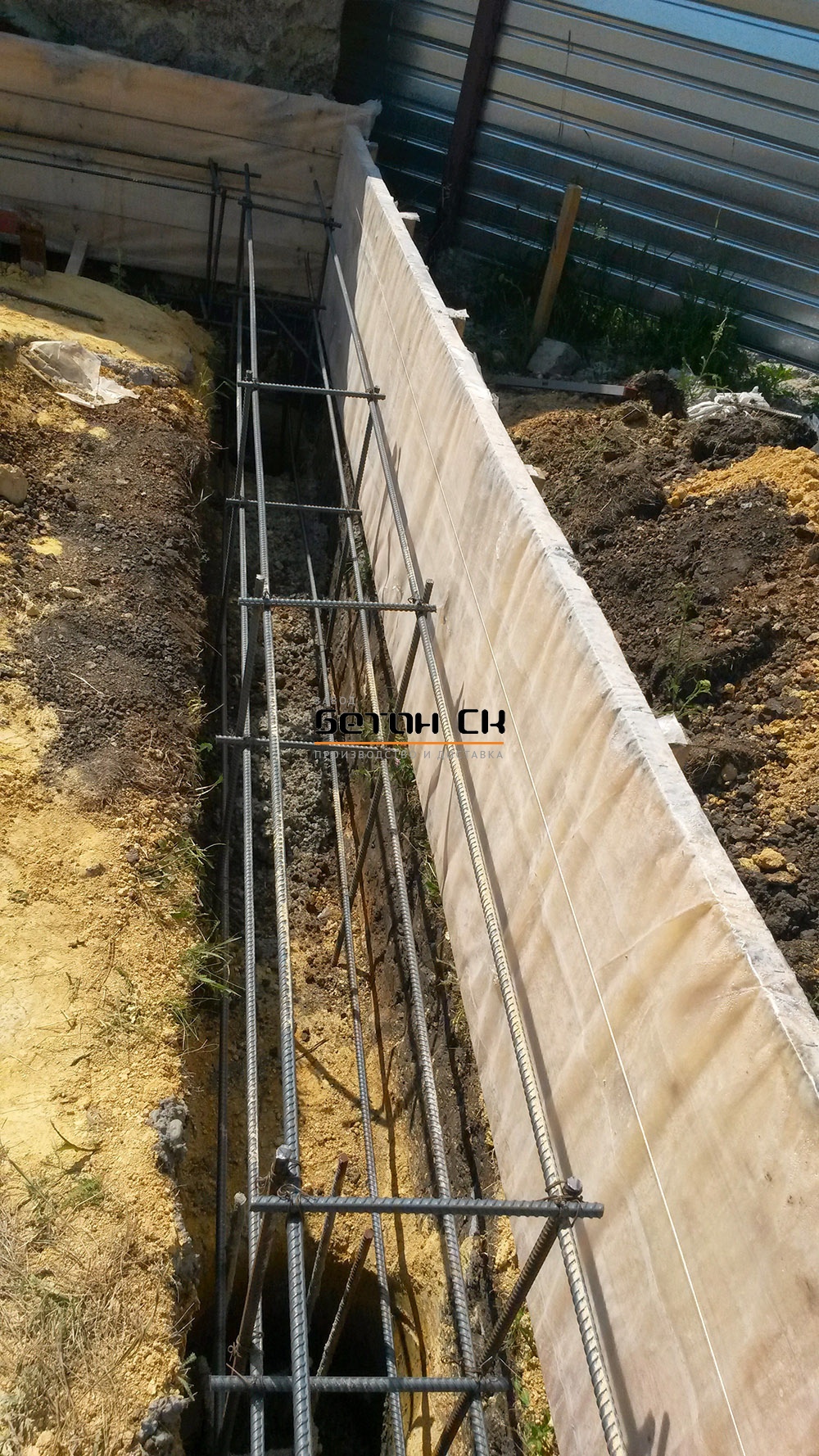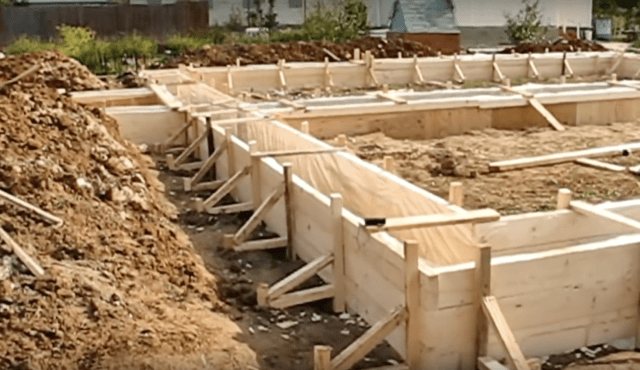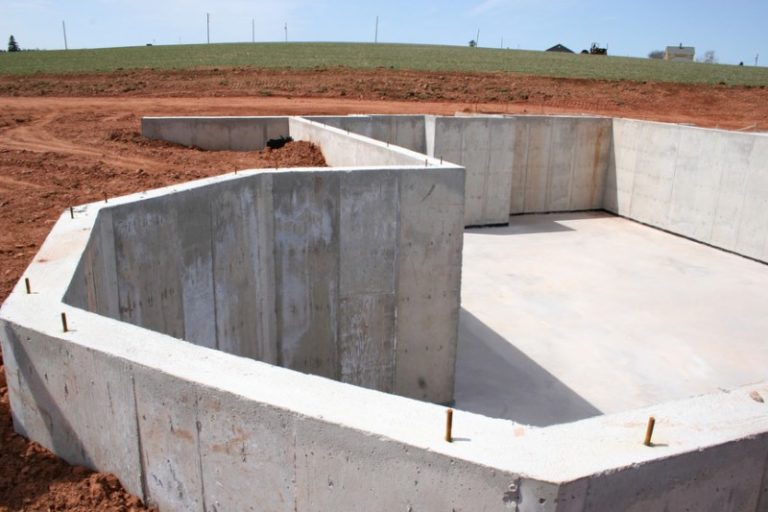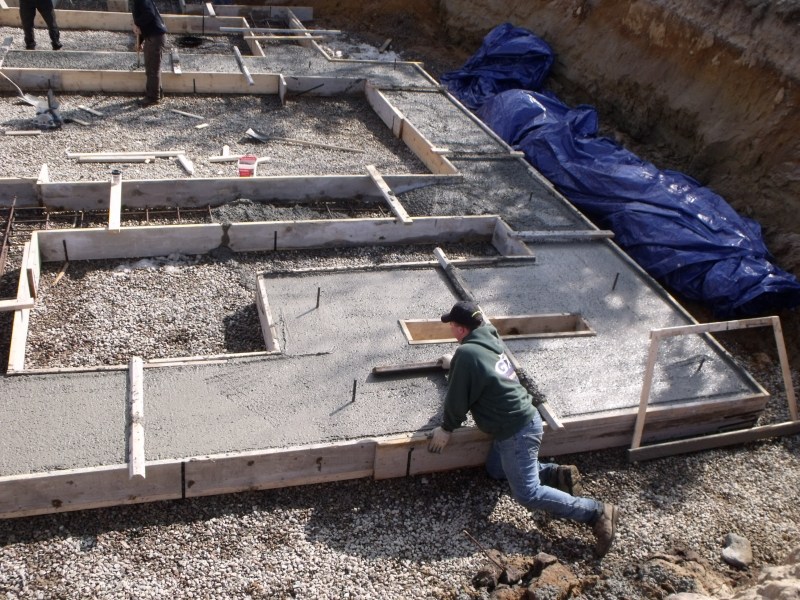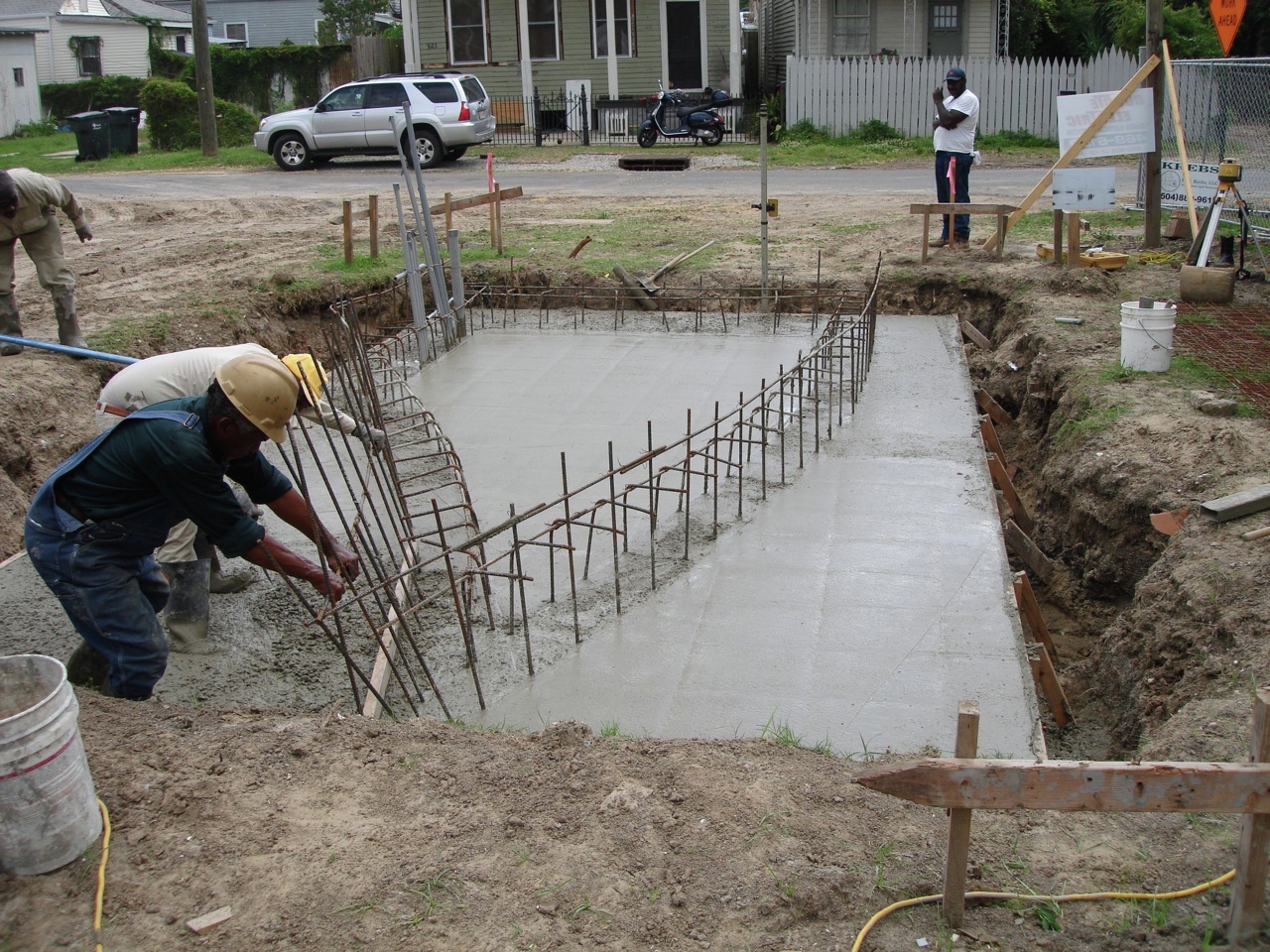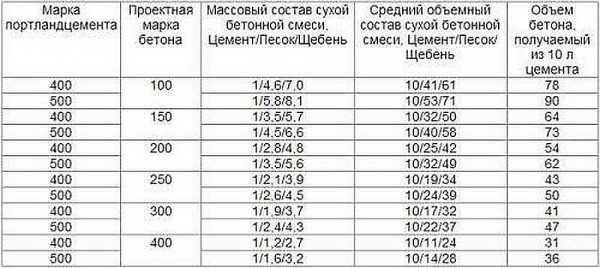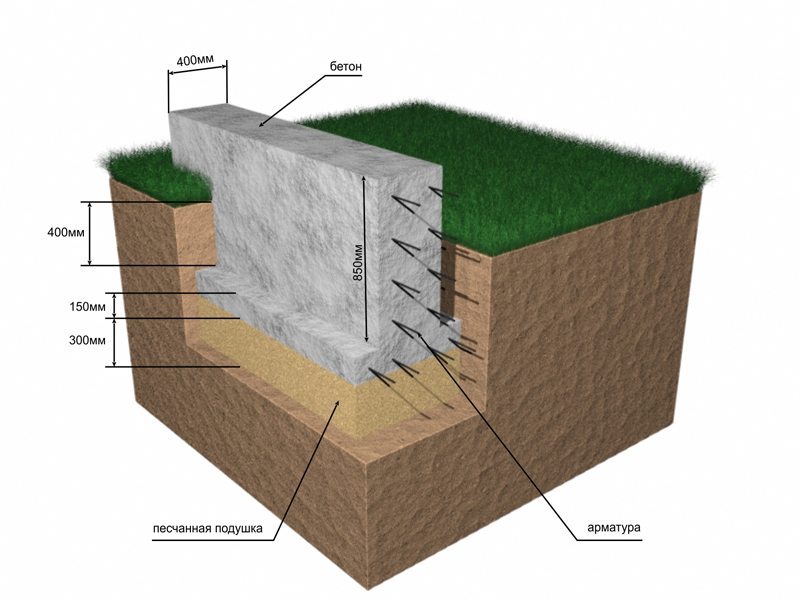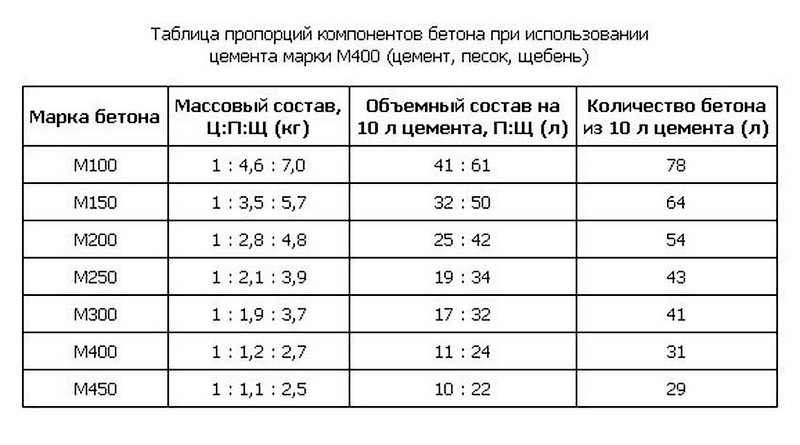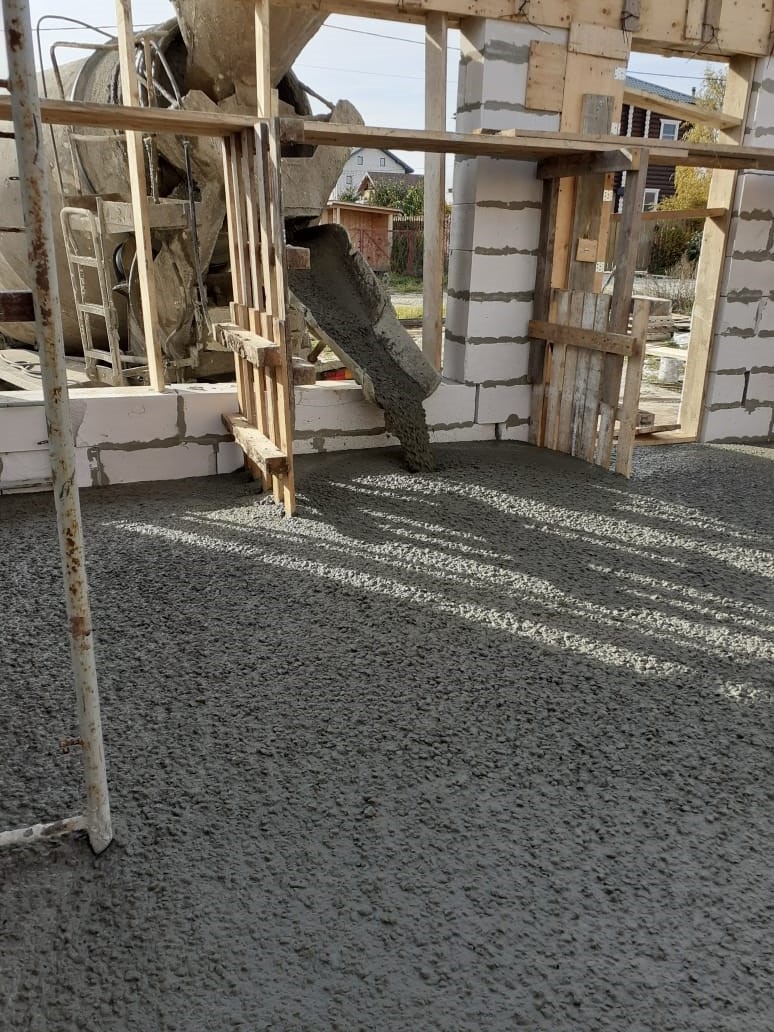What concrete to use for the foundation of the house, depending on the mass of the building
At the design stage, it is necessary to take into account a set of indicators:
the material used in the construction of the building. It can be various types of bricks, aerated concrete blocks, reinforced concrete, wood or foam concrete. With an increase in the density of the material, the mass of the structure increases accordingly;
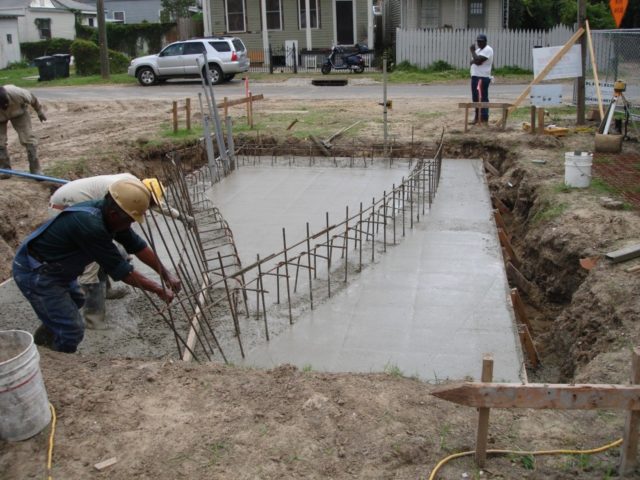
The strip foundation implies the use of lower grades, but the pile foundation implies the use of higher ones (but not always)
- number of storeys of a private building, as well as the possibility of completing an additional floor, for example, an attic. Buildings with an increased number of floors need a reliable foundation, in the manufacture of which concrete compositions with increased strength are used;
- the mass of equipment in the house. With the seeming insignificance of this indicator, it must be taken into account. After all, heavy pieces of furniture, household appliances and engineering equipment also affect the basis of the structure with their weight;
- slab weight, total roof weight and additional snow load. This value can be easily calculated, knowing the area of the floors and roofs, as well as the material used for their construction. The load from the height of the snow cover can be up to 200 kg per square meter.
When calculating which concrete to order for the foundation of a house, you should take into account the margin of safety and the material used:
- for wooden or aerated concrete buildings, the height of which does not exceed one floor, you can use the M100 solution;
- lightweight structures made of cinder blocks and aerated concrete can be erected on bases made of M150 solution;
- small frame-type buildings, as well as houses made of cellular types of concrete, are built on bases from a mixture of M200;
- houses made of aerated concrete blocks and wooden logs can be installed on a concrete base M250, if the total number of floors does not exceed three;
- the stability of private houses built of bricks is ensured on concrete bases from M300 – M400 grade mortars;
- concrete mix M450, can be used in private housing construction. However, given the increased cost of the material, from an economic point of view, this is impractical.
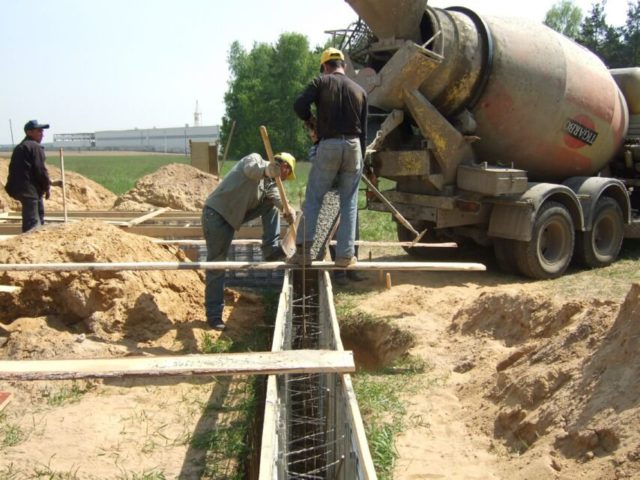
Water resistance - the ability of a concrete mixture to prevent water from passing under pressure from the outside
Based on the experience of practical operation of buildings, professional construction workers recommend using concrete mortars of the M250 – M300 brand for the construction of the foundations of private buildings. In this case, it is necessary to take into account the total load obtained as a result of the calculations.
Influence of slags and impurities
Despite the fact that for the foundation of a house it is better to use Portland cement without mineral additives (they lead to a decrease in the strength of structures), in some cases mixed varieties are also needed. Their main advantage is efficiency (with the exception of formulations with modifying and specialized additives, they, on the contrary, are more expensive), the PPTs M400 d20 brand is considered an example of a good price / quality ratio.
The advantages of using slag and pozzolanic cements include sulfate resistance, they should be chosen with a high proportion of salts in the soil or other aggressive influences. But they are slower to reach the required strength, so the laying of foundations on their basis is carried out in the spring. A significant disadvantage of cement mixed with slags is a decrease in the frost resistance of concrete; it cannot be used on moving soils.

Cooking proportions
To fill the foundation, concrete with a grade of at least M200 should be made. The quality of work is directly dependent on the use of the correct ingredients, their preparation and mixing with proven proportions.Ideally, these are: fresh Portland cement without lumps, dry and sifted river sand, gravel or crushed stone from hard rocks, clean (drinking) water. A coarse-grained filler is selected with a grain size of no more than 30 mm, preferably with a square flakiness, it must be cleaned of debris and, if possible, washed. The kneading is carried out in a concrete mixer, this is required not only to reduce the labor intensity of the process, but also to obtain the desired structure.
The ratio of cement, sand and gravel depends on the type of substrate. So, for columnar foundations, it is better to choose a ratio of 1: 3: 4 with a W / C of no more than 0.65, the same mixture is suitable as a masonry mortar when building it from blocks. In this case, a cement grade of at least M400 is used. For a strip type of foundation, these proportions are 1: 4: 6, with the same with a W / C ratio of 0.65. Excess water is unacceptable, it leads to disruption of the hardening processes and the formation of cracks.
The method of preparing concrete for pouring the foundation has shown itself well, taking into account the recommended brand standards. A proven proportion is chosen: 1 part of cement, 3 - sand and 5 - gravel. The W / C ratio in this case depends on the required parameters of the concrete:
| Expected concrete grade | Cement strength grade | ||
| 300 | 400 | 500 | |
| 200 | 0,55 | 0,63 | 0,71 |
| 250 | 0,5 | 0,56 | 0,64 |
| 300 | 0,4 | 0,5 | 0,6 |
| 400 | Not preparing | 0,4 | 0,46 |
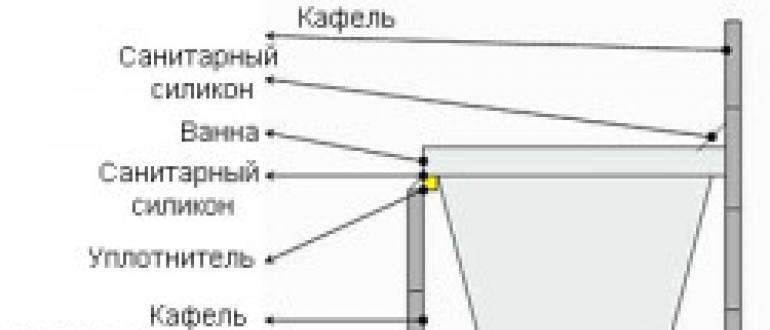
What else do you need to consider?
The quality of the cement is inversely proportional to its shelf life, and given the fact that high-quality (that is, rapidly losing its properties) is acquired for filling the bases, it is necessary to use the freshest powder of a light gray or greenish color that wakes up through your fingers. The attached certificate is checked, if the volume of work allows, then the material is purchased in plastic big bags, the packaging is opened immediately before preparing the solution.
Strengthening the strength of concrete is very simple: it is enough to add fiber or plasticizers, but this method increases the costs. Strip foundations must be reinforced, for them it is recommended to purchase gravel or hard crushed stone with a maximum size of fractions up to 20 mm. Regardless of the type of construction, waterproofing works are provided.
Cost of materials.
"Cement to cement - strife." This obvious statement took on a negative connotation after the recent raid by an independent commission from the Consumer Society of St. Petersburg and the Leningrad Region on construction hypermarkets in St. Petersburg. As a result of the inspection, it turned out that no more than 10 percent of the calibrated cement corresponds to the GOST standards of Russia. It is logical that at the height of the season, construction hypermarkets offer a fairly large selection of cement. An ordinary consumer often has a question about which cement to choose.
It is not so easy to find high-quality cement, because of the 20 varieties of cement that were checked for quality, the vast majority are packed in the same type of gray bags, without any "identification marks". No reliable information required for the consumer was found on the product. In this article, we will try to determine what quality cement should be, and provide tips to help distinguish quality cement from fake.
What information should the buyer have in order to choose good cement? The instruction provided by the Consumer Society of St. Petersburg and the Leningrad Region will help to answer this question.
How cement is marked
Not only the operational life of the structure, but also its tensile and bending strengths - those types of loads that the concrete tape experiences most of all - depends on the cement used for pouring the foundation base. To know what brand of cement is needed for the foundation of a house, it is recommended to understand its differences.
Not so long ago, a concrete mixture was prepared on the basis of one of the binders - PC (Portland cement) or SHPC (slag Portland cement).The main differences were in powder composition and strength characteristics. Cement grades for the foundation corresponded to the current GOST.
In addition to the name, the brand of cement material for the construction of foundations and other work contains a designation with numbers that indicate the maximum strength under load until complete destruction.
Now let's see what brands of cement are, how the marking is applied and what its decoding means.
According to the old designation system, several brands were distinguished:
- M 300 - withstands loads of up to three hundred kilograms per square centimeter of surface;
- M 400 - corresponds to a pressure of 400 kg;
- M 500 - withstands impacts of at least five hundred kilograms per site unit;
- M 600 - carries a load of six hundred kilograms.
The characteristics given here are not able to give unequivocal advice on which brand of cement to use for the foundation of a house, and what to use in the construction of lighter structures. Naturally, for large structures it is necessary to take material with a greater load. But you can prepare a concrete solution with the required indicators by changing the amount of a lower grade cement composition, increasing its amount.
This criterion is present in the marking of the material, and its presence is indicated by the corresponding letters and numbers D0 or D20. Before making the final choice in cement, it is recommended to clarify how the mineral components affect the quality of the binder. For example, D0 does not contain any components, and the solution is of the highest quality. But the brand with the designation D20 carries up to twenty percent of impurities that lower not only strength, but also cost. When choosing a cement material, for example, for the foundation of a fence, you can use a powder with a lower strength indicator, thereby reducing the cost of the total cost of construction work.
When deciding which material is best to use for pouring a strip foundation, you should study the remaining characteristics of the component indicated in the marking. The following designations are most often found:
- PL - there are plasticizers in the cement. Such material for the foundation is used when temperatures are low in the region in winter;
- VRC - this abbreviation denotes the moisture resistance of the mixture and the increase in volume during solidification. If you are in doubt about which cement is best for a foundation in a swampy area, then you will not find another option;
- B - such material requires less time before final solidification. If you have a choice of what to use on the foundation of a house, when the terms of work are limited, choose this particular cement material;
- SS - sulfate resistant cement. It is rarely used by private developers, because its main purpose is considered to be the concreting of hydraulic structures. When plugging oil and gas wells, plugging cement is used - a mixture of clinker powder, gypsum and other components;
- H - cement with this marking has undergone additional rationing using clinker. This additive ensures high strength of the material;
- BC - "white cement". A distinctive feature is that it brightens after hardening. It is rarely used, mainly for finishing work.
What concrete is better for the foundation of a house - selection of a brand of concrete mortar
It is important to choose the right type of composition used for specific construction activities. Concrete mortar with increased strength is distinguished by an increased price
Lightweight concretes with low strength characteristics are not able to withstand real loads.
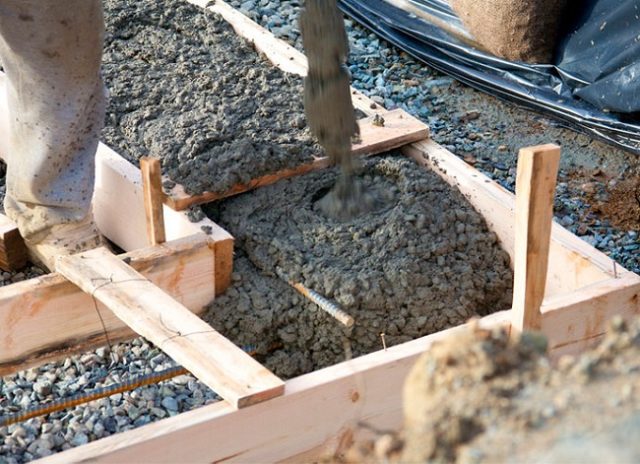
In the case of sandy or rocky soils, for a strip foundation and a building of 1-2 floors, you can safely choose low grades of concrete M150 - M200
It is necessary to find the best option, focusing on the following parameters:
- the total mass of the building structure. Depending on the weight of the building, the operational load on its base is determined;
- the nature of the soil associated with the depth of the location of the aquifers. The degree of soil deformation depends on moisture concentration and temperature;
- the structure of the foundation part of the building. The loads taken by different types of substrates differ depending on the design features;
- climatic conditions. It is necessary to take into account the possibility of sharp temperature drops, under the influence of which cracks appear in the massif.
When deciding which concrete is suitable for the foundation, all factors must be carefully analyzed.
Types of concrete and their properties
Foundation concretes can be made in different modifications and, accordingly, with a different set of characteristics. Both its service life and the operational characteristics of the structure itself, which will subsequently be erected on it, will depend on this. Although today there are houses with a foundation without concrete, the option under consideration is more reliable, efficient and durable.
Concrete characteristics
Concrete is a mixture of four main components: cement, sand, gravel and water. Also, various other ingredients can be added to it to give it certain properties.
Depending on the quantitative and qualitative composition, self-made concrete on the foundation is characterized by the following set of properties:
- Grade, for example, M 200. This is the main parameter of concrete, reflecting its performance properties after the end of the hardening period, that is, a month.
- The class, according to the rules of SNiP 2.03.01-84, is designated by the letter B followed by a number indicating the pressure (MPa) that the sample can withstand. An example is B25.
- Workability, according to the standards GOST 7473-2010, is expressed in seconds and is subdivided into grades - super-rigid, rigid and mobile. The less stiffness, the easier it is to place concrete with a concrete pump.
- Waterproof. It is designated by the letter W and a number - from 2 to 20. A concrete foundation with a high indicator of this parameter is necessary in an area with a high level of groundwater.
- Frost resistance. It is displayed with the letter F and a number - from 50 to 1000. It is characterized by the number of "freeze / thaw" cycles that the concrete can withstand.
The most important characteristic for someone who is going to make foundation concrete with his own hands is still its brand.
Table of concrete grades and their properties
In most cases of private construction, with self-production, it is possible to obtain concrete of grades from M100 to M500. Therefore, we will consider their characteristics and scope.
| Concrete grade | Properties and application |
| M100 |
|
| M150 | Concrete has not very high strength, but sufficient to form the foundation of lightweight residential or commercial structures. |
| M200 | The concrete is strong enough, but suitable only for the construction of the foundation in single-storey construction. |
| M300 |
|
| M350 (M400) |
|
| M500 |
|
Thus, the choice of concrete for the foundation of a private house, from the point of view of economy and safety factor, most often stops at grades from M150 to M400 - depending on the type of base, the characteristics of the soil and the structure of the structure itself.
(‘+ C +’ kg of cement, ‘+ p +’ tonnes of sand and ‘+ g +’ tonnes of crushed stone)
Fittings '+ a +' meter (s) (s).
Formwork boards (thickness 25 mm.) '+ O +' m3
Concrete composition for the foundation
Concrete is a material consisting of:
- Astringent. Most often it is cement (Portland cement). There is also non-cement concrete, but it is not used for foundations.
- Placeholders:
- sand;
- crushed stone or gravel.
- Water.
The grade of concrete is determined by the proportions of all these components, as well as by the conditions of its hardening (setting). Optimal conditions for concrete to gain strength are created at a temperature of + 20 ° C. Under such conditions, the process is very active in the first 7 days. During this time, concrete gains about 50% strength. With such parameters, it is already possible to continue construction further. The design strength, which is taken as 100% in design, under such conditions is recruited in 28-30 days. In reality, the process continues further, but at a very low speed. The strength gained after 30 days is not taken into account anywhere - it goes "in reserve".
At what strength can the construction be continued depending on the grade of concrete
With a decrease in temperature, the setting time increases significantly (at + 15 ° C it takes about 14 days to reach 50% strength). At a temperature of + 5 ° C, the process practically stops, and under such conditions, winter concrete is already needed - with appropriate additives and / or measures to increase the temperature (wrapped, heated in a mixer, heated through the formwork or heated directly by attaching heating cables to the formwork from the inside ).
For the manufacture of concrete, various types of Portland cement are used. The most common are:
- Portland cement - begins to set no earlier than 3/4 hours and no later than 3 hours after mixing. The end of the setting is in 4-10 hours.
- Slag Portland cement - after mixing, depending on the temperatures and parameters of the solution, it begins to set in 1-6 hours, finishes in 10-12 hours.
- Pozzolanic Portland cement - hardening begins in 1-4 hours, ends in 6-12 hours.
- Alumina cement - begins to harden in 1 hour, finishes in 8 (but not later).
The cement grade is needed for the foundation, usually M400 or M500
Any of these types of binder can be used to prepare concrete. Only you will need to take into account the setting time of the solution - you need to lay and vibrate it before hardening.
Recommended grades of cement for concrete
Placeholders
Aggregates also influence the quality of concrete. It is necessary to adhere not only to the recommended proportions, but also to quality indicators - moisture and graininess.
Depending on the size of the grains, the following types of sand are distinguished:
- large size of grains of sand 3.5-2.4 mm,
- medium - 2.5-1.9 mm,
- fine 2.0-1.5 mm;
- very small 1.6-1.1 mm);
- thin (less than 1.2 mm).
One of the components of concrete is sand
For backfilling, mainly large and medium ones are used, less often small ones. The sand should be clean - not contain any foreign inclusions - roots, stones, plant residues, pieces of clay. Even the content of dust and silty substances is standardized - they should not be more than 5%. If you decide to "extract" the sand yourself, check the amount of pollutants.
To test 200 cc. centimeters of sand are poured into a half-liter container (can, bottle), filled with water. After a minute and a half, the water is drained, poured again and the sand is shaken. The procedure is repeated until the water is clear. If there is 185-190 cubic meters of sand left cm, it can be used - its dust content does not exceed 5%.
You also need to pay attention to the moisture content of the sand. All proportions are based on dry components.
Even dry and loose sand has a moisture content of at least 1%, ordinary - 5%, wet - 10%. This must be taken into account when dosing water.
Crushed stone and gravel
Crushed stone is obtained by crushing rocks. Depending on the size of the fragments, the following fractions are distinguished:
- extra small 3-10 mm;
- small 10-12 mm;
- average 20-40 mm;
- large 40-70 mm.
Crushed stone must be used in several fractions
For the preparation of concrete, several fractions are used - so the distribution of crushed stone over the volume is more uniform, and the strength increases. The size of the largest fragments is normalized: it should not be more than 1/3 of the smallest size of the structure. With regard to foundations, the distance between the reinforcement rods is taken into account. SNiP also determines the amount of small crushed stone: it must be at least 1/3 of the total volume.
Gravel has approximately the same fractions and sizes, but when it is used, the water-cement ratio (water / cement or w / c) increases by 0.05 (5% more water must be poured).
For the preparation and watering of concrete, potable water is used. Including the one that can be drunk after boiling. Sea water can be used with Portland and alumina cement. Any other industrial water is not suitable.
What factors influence the choice of the brand of composition
Unfortunately, there are no universal recipes, the price is not always a fundamental factor. After all, even expensive formulations have their own recommendations and restrictions on use.
Scheme of the formwork option for the strip foundation.
Dependence on the weight of the building
If you want to build a house with your own hands, and you do not have a ready-made project with prescribed recommendations, then, first of all, you should pay attention to the total weight of the building. This is the first indicator from which they start when choosing a brand of composition.
Here are some general guidelines:
- A prefabricated panel house with a height of 2 floors, in most of our country, will comfortably stand on a reinforced concrete foundation filled with the M200 brand.
- For 2 - 3 storey log buildings, as well as for houses built of foam concrete, gas silicate blocks or other cellular concrete, M200 - M300 grades are recommended.
- For heavy, permanent buildings made of bricks, solid concrete structures or other heavy materials, it is recommended to use the M300 grade and above.
Reinforced blank for filling the structure.
Soil characteristics
Much depends on the geology of the soils in a given area, their composition and how deep the groundwater is.
Sandstones and rocks are considered the most favorable. They can be poured with concrete M200 - M250.
Clay soils and loams are quite a problem. The fact is that these soils, when frozen, are prone to heaving. That is, they do not freeze evenly and are able to squeeze out a shallow-buried strip foundation in some places, which leads to a general deformation. In this case, you can do it in two ways.
-
- First, to deepen the structure to a level higher than the average total soil freezing in the region.
- Secondly, you can equip a strip-columnar, well-reinforced foundation. This is when at key points support concrete pillars are poured to a considerable depth, which stabilize the entire structure.
- If we talk about what grade of concrete is needed for a strip foundation laid on clay, then experts recommend taking a grade an order of magnitude higher, approximately M250 - M300.
Scheme of a tape-and-column structure.
Waterproofing on the foundation.
Common grades of concrete
In the production of concrete of different grades for foundations, cement M 400 is most often used, but in different proportions.
- M100 - is used as an underlayment in road construction, deep foundations or floor screed.
- M200 - suitable for shallow foundations based on stable soils. Cellars and all kinds of open areas are poured into it.
- М250 - used for casting fences, all kinds of stairs and tape-and-columnar structures.
- M300 - is considered the most popular brand for pouring the foundation. It is successfully poured into the vast majority of known foundation structures, and can be used in a humid environment.
- М400 - used for filling underwater structures, bridges and other capital structures. It is used for the construction of houses in extreme conditions.
- M500 - used for pouring sheer structures, repairing roads and structures, or as an additive.
Detailed table of proportions.
What else is worth paying attention to
There is also a marking characterizing the strength class of the hardened composition. It is designated by the letter "B", characterizes the compressive strength and is measured in megapascals.
Classification of concretes for cement M500.
The level of strength and the grade of concrete are related indicators. According to GOST, each grade of concrete corresponds to its level of concrete strength, here are some basic indicators:
-
- B7.5 corresponds to M100
- B15 corresponds to M200
- B20 corresponds to M250
- B22.5 corresponds to M300
- B25, B27.5 correspond to M350
- B30 corresponds to M400
- B35 corresponds to M450
For our country, the frost resistance indicator is also relevant, it is marked with the letter "F" and a certain number after it. The number indicates how many times the structure can freeze
For a larger territory of the country, F200 is enough, the more thaws in winter, the higher this figure.
It is also worth paying attention to the indicator of resistance to high humidity. It is indicated by the letter "W" and the number after it.
Technical characteristics according to GOST.

